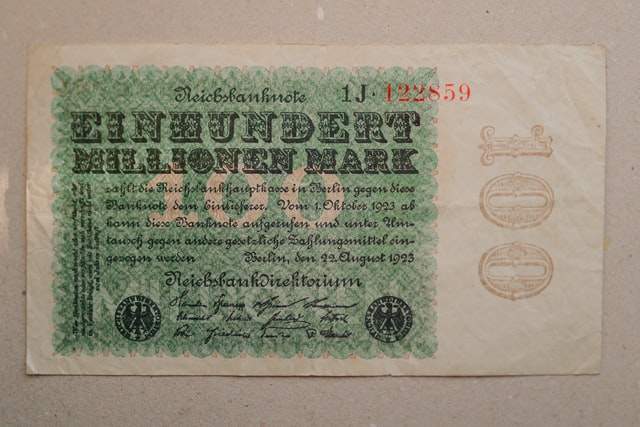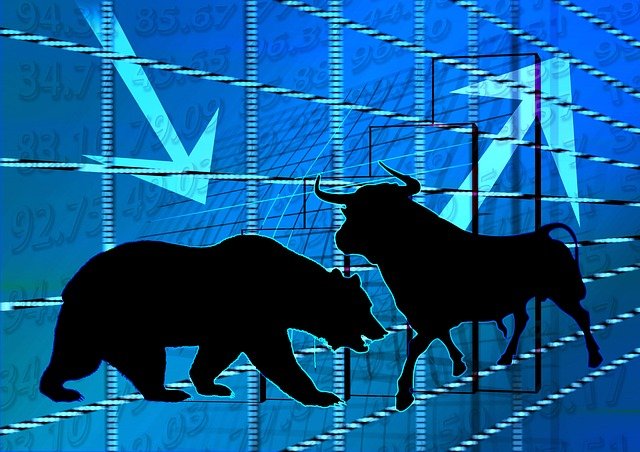There are those who believe they believe that U.S. is set to attain an inflation rate of at least 1,000%.
Hyperinflation typically referred to as a series of exaggerated, uncontrollable price increases, is a rarity in advanced countries. This is because a true hyperinflation must be able to meet a strict standard, namely an inflation rate of 1000 or more per year as per the majority of analysts. 1
The U.S. Federal Reserve System (FRS) declares that an annual inflation rate of 2percent is “most in line in line with Federal Reserve’s mission to ensure the highest level of job creation and stability in prices. “2
The rate of inflation for the United States in 2021 was 6.6%. In 2020, the rate was 1.2 0.9% and 1.9 percent for the year 2019. The highest the rate at which inflation has been since 2011, which was 3.5 percentage.
Inflation and Economic Equilibrium
In the field of finance, the term “equilibrium” is an abstract state in which demand and supply are at a perfect equilibrium. It is simply the amount of goods available is the amount of people willing to purchase the items. If the equilibrium of the economy is in disarray (which is usually the majority often) this is known as disequilibrium. One reason for this is inflation..
If disequilibrium is caused due to inflation, the prices of products and services increase in response to the gap between demand and supply. The end result of inflation is a decrease in the buying power that your cash can buy. Inflation is the reason that items that cost $1 today could cost $1.25 one year from now. For the majority of people this is how things work. 4
Hyperinflation: Affliation Goes Amuck
Hyperinflation is a different thing. Hyperinflation is inflation that has a slew of. In the case of hyperinflation, a one dollar today could cost between $10 and $50 over one calendar year. 1 According to Anders Aslund of the Peterson Institute for International Economics, hyperinflation is only a possibility under specific circumstances, such as the breakdown of a currency following conflicts, when fiscal authorities are unable to control the situation or when a wild populism is prevalent.
A striking instances of hyperinflation that has ever occurred was in the aftermath of World War I in the Weimar Republic of Germany. In the attempt to pay for war reparations and expand the economy simultaneously the German government produced enough money that an enormous gap between demand and supply was created, which led to an increase of 322% per year, or the annual average of over three billion per cent ofby December 1923. 6
The table below shows the effect of annual inflation that is normal (2 percent) in addition to hyperinflation (1,000 percent) on the price of certain products in the basket of services and goods which are covered with the Consumer Price Index (CPI), used to determine the rate of inflation within the U.S.
| Item/Service | 2020 Price | 2021 Price with 2 % Inflation | 2021 Price Including Hyperinflation of 1,000% |
|---|---|---|---|
| Cup of coffee | $2.00 | $2.04 | $22.00 |
| Gallon of milk | $3.50 | $3.57 | $38.50 |
| T-shirt for men | $60.00 | $61.20 | $660.00 |
| Insulin (vial) | $95.00 | $96.90 | $1,045.00 |
| 55-inch TV | $400.00 | $408.00 | $4,400.00 |
| Two-bedroom apartment rent | $2,000.00 | $2,040.00 | $22,000.00 |
Source Writer Calculation
The causes of inflation
The economists have identified two major sources of the rise in inflation: cost-push and demand-pull. Cost-push inflation is when the price of production is increased (e.g. due to rising costs for raw materials or increases in wages). This leads to an increase in the cost of items and services because manufacturers pass on their price increases on to the consumer. In the case of cost-push inflation, the prices get “pushed” up due to cost of production that is rising.
Demand-pull inflation occurs when supply is insufficient compared to demand. The demand can rise because of a robust economy, natural disaster or an excess of money. In these situations demand exceeds supply, which “pulls” prices up.
The causes of hyperinflation
The two main causes of hyperinflation is (1) an rise in the amount of money in circulation that is that is not supported through economic expansion, that leads to the rate of inflation and (2) the demand-pull effect of inflation where demand exceeds supply. Both of these causes are connected since they both overburden the demand part of the equation of supply and demand.
The rise in the supply of money is usually triggered by government intervention like what occurred during Germany during 1923. If the government pumps cash into the system, there is a risk that hyperinflation will occur. The demand-pull effect of inflation is due to the fact that the people have more money, which leads to a desire to pay more for goods and services that increase the demand.
Hyperinflation is a rare phenomenon.
As you can see, hyperinflations, such as the one in the previous paragraph, can be fiscally destructive to a nation. Fortunately, they’re uncommon. Aslund goes as that she refers to hyperinflation as “an insignificant issue for ordinary money policy. “5
Hyperinflation may occur when governments print more money to address the onset of a crisis, like during the Weimar Republic. It doesn’t have to be an outbreak of war. It can be caused by a bad economy, illness or natural catastrophe or even a feeling of fear that leads people to store. Of course, this reduces supply, which in turn increases the demand.
Each of these variables when taken to the extreme, could lead to hyperinflation. As Aslund points out however, this rarely results in hyperinflation under normal monetary policy.
Yet, Rumors Remain
Despite the lofty standards to reach hyperinflation, there’s a few who claim that’s precisely the direction that it is that the United States is headed. Here are a few examples of recent blog posts on the internet showing various methods:
“Deficit-to-outlay ratio tops 60%, which is above the hyperinflationary threshold of 40 percent. “9 — Albert Sung
“Eventually all major Nation State Empires collapse and the people who reside there lose faith in their leaders, and together, the currency they release. This has been the case throughout Ancient Babylon, in Egypt, China, Rome, numerous leading nations in Europe and will eventually affect on the U.S. when the American citizens decide they prefer to be a free nation rather than slaves to an unpayable national debt, whose interest will eventually be more costly to the budget of the federal government than military spending.” — Joseph Holleman
Are it true that the United States Actually Headed for an Inflationary Crisis?
Certain people might think that way. But most authorities say, “No.”
The economist Asher Rogovy attacks the persistent internet rumor that suggests the U.S. is printing too many dollars and this will cause hyperinflation.
Rogovy says Rogovy, “In the U.S. central bank does not make payments on its debts by generating money. Instead it lends money at the rate it has set as well as the private market makes use of the capital more efficiently. The money that is created is repayable in full, which is the primary reason that this policy does not cause hyperinflation.”
Prof. L. Burke Files of Hayek Global College suggests that hyperinflation is not likely in stable economies, such as that of U.S., in part because of the cost-control aspects that are made possible by a global economy. “The interconnectedness that exists across the globe,” Files says, “is the “pressure relief valve’ for the majority of nations. The nations which print a ridiculous amount of currency, such as Zimbabwe, or attempt to manipulate their currencies and restrict trade, like Argentina, become the exceptions.”
“I do not think inflation will remain at a level as minimal as that of the Federal Reserve’s inflation forecast of 2%” declares Jim Pendergast, senior vice president of altLINE. “That said, I’m not convinced that we’ll experience the kind of hyperinflation portrayed in these headlines of apocalyptic articles. There will be mixed results because of a particular sequence of events that linger in COVID.”
In the end, attorney Steven J.J. Weisman Esq., addresses what He calls the possible “scam” aspect of certain hyperinflation-related rumors on the internet. “Sometimes reports like this are fabricated to be shocking enough to get people to read the articles which are published on websites that pay advertising by the number of clicks they receive,” says Weisman.







Leave a Comment